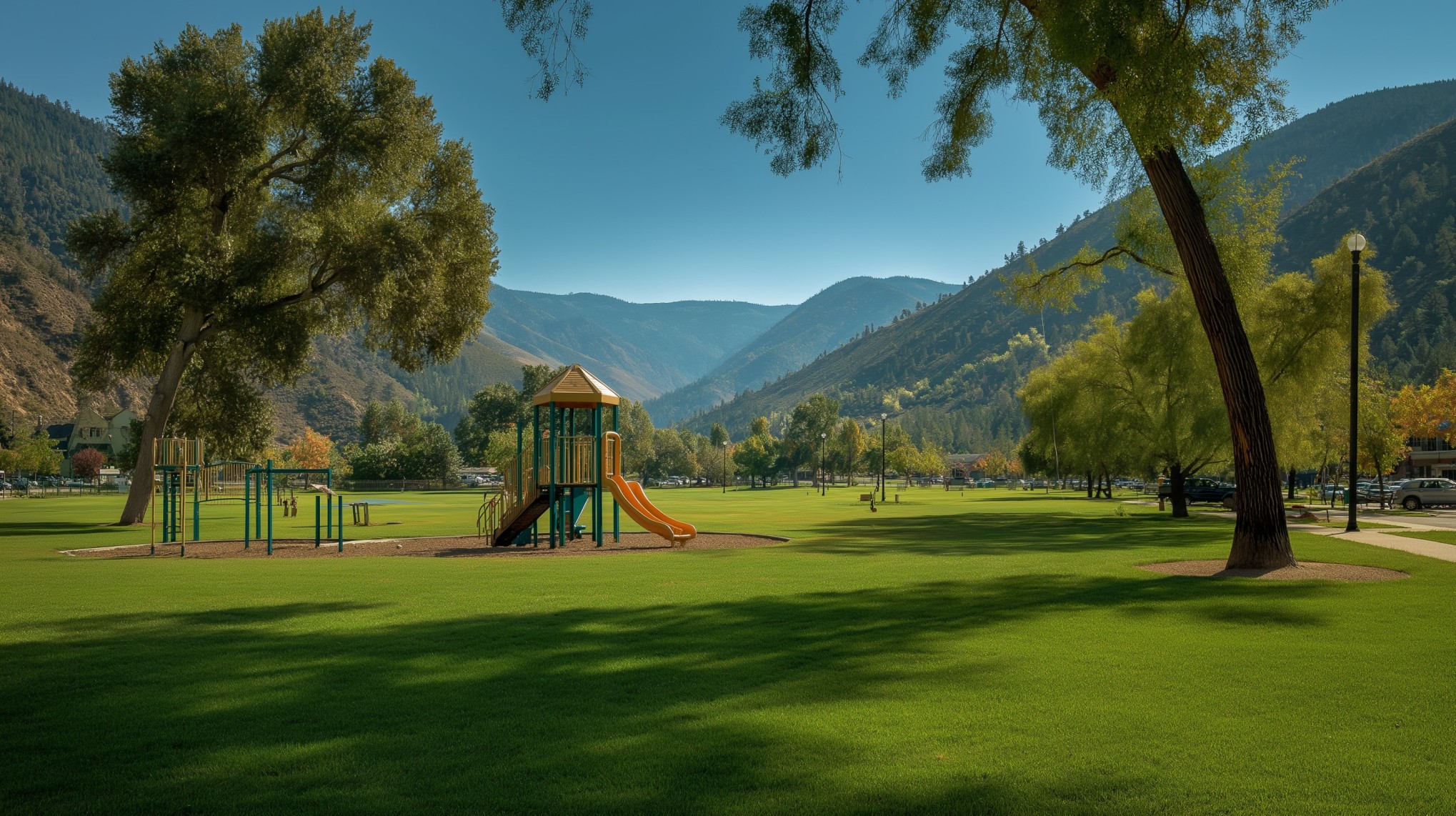
Blog
We keep you up to date on the most recent real estate news and events.
Forest on One Side, Dam on the Other: What Makes Central Vista Truly One‑of‑a‑Kind
In North India’s Tricity belt, where the Shivaliks press close and water bodies shape everyday life, the views of the forest and dam are not just picturesque. It’s a geographical privilege that cannot be cut-and-pasted somewhere else, because geography, ecology and regulation together make it rare by design.
This is a narrative about non‑replicable value: how a site that kisses protected green and sits in the visual or microclimatic catchment of a dam commands a status beyond square footage. It’s also a practical guide to what that means for a home’s light, air, temperature, long‑term appreciation, and community life in the Indian context—where planning laws, environmental buffers, and hills-and-river geographies decide what is, and is not, possible.
Why a green–blue edge is more than a view
A home is a daily rhythm of sun and breeze. Forest edges cool the air, temper winds, and create a microclimate; water bodies reflect light, recharge aquifers, and draw biodiversity. Put them together and the site’s very physics changes—less radiant heat, more stable temperatures between day and night, better air quality, and seasonal vistas that evolve without a developer “creating” them. In the Shivalik foothills around Panchkula–Kalka, this is grounded in real geography: a belt of notified forest and wildlife sanctuaries meeting a chain of tributaries, seasonal cho streams and small dams that manage water and floods.
Consider the Kaushalya Dam: an earth‑fill embankment completed in 2012 on the Kaushalya River in Pinjore, built primarily for water supply and local flood moderation. It lies roughly 12km from Panchkula city, with the Khol‑Hi‑Raitan Wildlife Sanctuary and Bir Shikargah Wildlife Sanctuary in its immediate landscape, illustrating how green and blue assets interlock in this region. During the 2023 North India floods, its gates discharged around 4,000 cubic meters to manage flows—evidence that this is living infrastructure, not a postcard.
(Wikipedia summary of Kaushalya Dam).
Why does that matter to a resident? Because a parcel that sits within the climatic “reach” of a forest edge and a dam’s reservoir benefits from cooler evenings, filtered air, and higher habitat value—advantages that neither an internal garden nor a decorative water feature can replicate—the catch: such adjacencies are complicated to obtain and more challenging to approve.
The approvals reality: you can’t just build this anywhere
Building in the Shivalik foothills comes with strict rules because several protections overlap. The Punjab Land Preservation Act (PLPA) marks large areas as ecologically sensitive. Wildlife sanctuaries require mandatory buffer zones. Defence and aviation facilities add their own no‑build or low‑build zones.
The takeaway for buyers and developers is straightforward: sites that legally touch forest edges or sit beside controlled water bodies are rare because geography, past notifications, and master plans all have to line up. Those who secure approvals do so at the right place and time, after real diligence. Finding another parcel with the same scale, buffers, and long‑term certainty later may not be possible.
Design consequences: when geography leads architecture
Homes on a forest–dam axis don’t need to “create” their context. The job of design is to frame and protect it.
- Orientation and light: Near water and tree lines, deeper balconies, fins, and shaded glazing turn harsh western sun into comfortable golden-hour light with cooler evening breezes.
- Cross-ventilation: Align living–dining–balcony to prevailing forest-edge winds; tune floor-to-floor heights, sill bands, and operable windows to boost stack effect and cut AC dependence.
- Sound and privacy: Use dense green as a natural acoustic buffer—quiet amenities (reading decks, yoga, birding) along the forest edge; livelier zones by the dam-facing promenade.
- Water resilience: Engineer hydrology-first design with rainwater harvesting sized for peak monsoon loads, dual plumbing for reuse, flood-safe electrical rooms—vital in Shivalik cho terrain
- Biodiversity as amenity: Support habitat with low-glare lighting, native planting, and clear pet policies so wildlife encounters are an everyday delight, not just a brochure line.
The outcome: cooler evenings, cleaner air, and outdoor spaces people use—more hill-station shoulder season than city midsummer.
Rarity economics: why non‑replicable sites command a premium
In real estate, scarcity adds value only when it can’t be easily replicated. A skyline view lasts until a taller tower arrives; a fancy club lasts until a neighbour builds one. But a site edged by notified forest and a regulated water body is scarce for good—those conditions can’t be recreated at will.
How that value shows up:
- Lower future supply: Forest buffers, eco‑sensitive zones, PLPA hills, defence/aviation buffers, and waterbody protections collectively remove large chunks of foothill land from future development
(Mullanpur Local Planning Area Master Plan 2008–2031, Government of Punjab).
- Protection from over‑densification: Even if zoning loosens elsewhere, such edges are far less likely to get crowded beyond plan, preserving views, air, and privacy.
- Resilience premium: After the 2023 floods, buyers are willing to pay more for hydrology‑literate sites near managed reservoirs that help moderate peaks and secure supply
(Wikipedia summary of Kaushalya Dam).
Put simply, a bigger clubhouse can be copied; moving a forest closer or a dam upstream cannot.
What this means for everyday life
The romance must translate to routine.
- Morning routes: Jogging circuits that skim the green edge; shaded benches that are comfortable in May.
- Kids and elders: Low‑glare daylight, gentler microclimate, and clean air make balconies usable, not ornamental. Elders walk more when the air feels kinder.
- Interior design: When the outside is genuinely compelling, interiors can simplify—fewer ornamental partitions, more emphasis on view cones, window seats, and material palettes that recede to let the light do the work.
- Community identity: Shared decks with reservoir sunsets and shared paths under old trees build rituals. A place with its rituals retains residents longer and weathers market cycles better.
Risk, regulation and responsibility
With privilege comes responsibility. Forest‑side living must respect wildlife movement, and dam‑side living must respect water. That means:
- Lighting design that minimises spill into the tree line.
- Waste and stormwater systems that exceed minimum codes, because downstream is a reservoir.
- Construction practices that protect topsoil and prevent siltation in monsoon months—critical in Shivalik soils (Mullanpur Local Planning Area Master Plan 2008–2031, Government of Punjab).
- Transparent disclosures of approvals and clear buffers to reassure buyers that the adjacency is legal, stable and permanent.
A brief geography lesson: the Shivalik–Tricity context
The Tricity sits where the plains lift into the first ripples of the Himalaya. Panchkula’s sector grid interlocks with Chandigarh’s institutional core and Mohali’s new growth band, while the surrounding hills hold a necklace of forests and sanctuaries that shape the region’s identity. Two facts make the “forest one side, dam the other” proposition plausible here and rare elsewhere:
- The sanctuary–reservoir mosaic: Wildlife sanctuaries like Khol‑Hi‑Raitan and Bir Shikargah sit within short distances of dams and barrages like Kaushalya, creating green–blue adjacencies that are uncommon in flat urban belts
- The hill‑cho hydrology: Seasonal streams run feral in monsoon and meagre in winter; small and mid‑sized dams at the foothills modulate this, and master plans mark these corridors as sensitive, limiting indiscriminate construction.
This is why specific parcels feel inevitable when discovered—and impossible to copy once sold.
Investor lens: how to underwrite a site like this
- Approvals first: Verify forest/PLPA/wildlife buffers on official maps and the project’s sanctioned site plan. In the foothills, diligence isn’t optional—it’s the deal.
- Hydrology audit: Ask for the stormwater plan, rainwater harvesting sizing, and elevation of critical services above historical high‑water levels. The 2023 events provide a live stress test.
- Edge management: Seek commitments on edge planting, light controls, and long‑term maintenance—these are value drivers, not costs.
- Phase logic: Ensure early phases deliver the promenade or forest‑edge experience so the “one‑of‑a‑kind” value is live from day one.
- Hold period: Geography compounding takes time. A 7–10 year horizon lets scarcity, reputation, and community depth translate into price leadership.
Buyer lens: what changes inside the apartment
- Windows matter more: Choose plans with true corner glazing where possible, or long balcony runs aligned to the view. Avoid layouts that relegate the best sightlines to secondary rooms.
- Materiality: Low‑sheen finishes, breathable paints, and insect‑screen‑friendly frames make it easier to live open to the air.
- Storage and silence: When outdoors beckon, clutter feels louder. Built‑ins that have transparent surfaces and good acoustic separation for one flex room pay daily dividends.
- Season strategy: Design for monsoon—boot shelves, drying lines that don’t steal the balcony, and entry mats that are more than decorative.
A word on non‑replicability
Urban India’s great lesson of the last decade is that everything can be imitated—except geography and governance. The foothill belts of North India, stitched with sanctuaries, PLPA lands, defence buffers and dams, leave very little room for serendipity. A handful of parcels sit where the green and the blue speak to each other, and where the law allows a community to sit lightly between them. Those are the addresses that hold their ground through cycles.
The Central Vista land parcel—framed by a forest edge on one side and the dam’s water on the other—fits that rare mould. It borrows climate and beauty from assets that will outlast fashions and finishes. Its best amenity is not a line on a price sheet; it is the place itself.